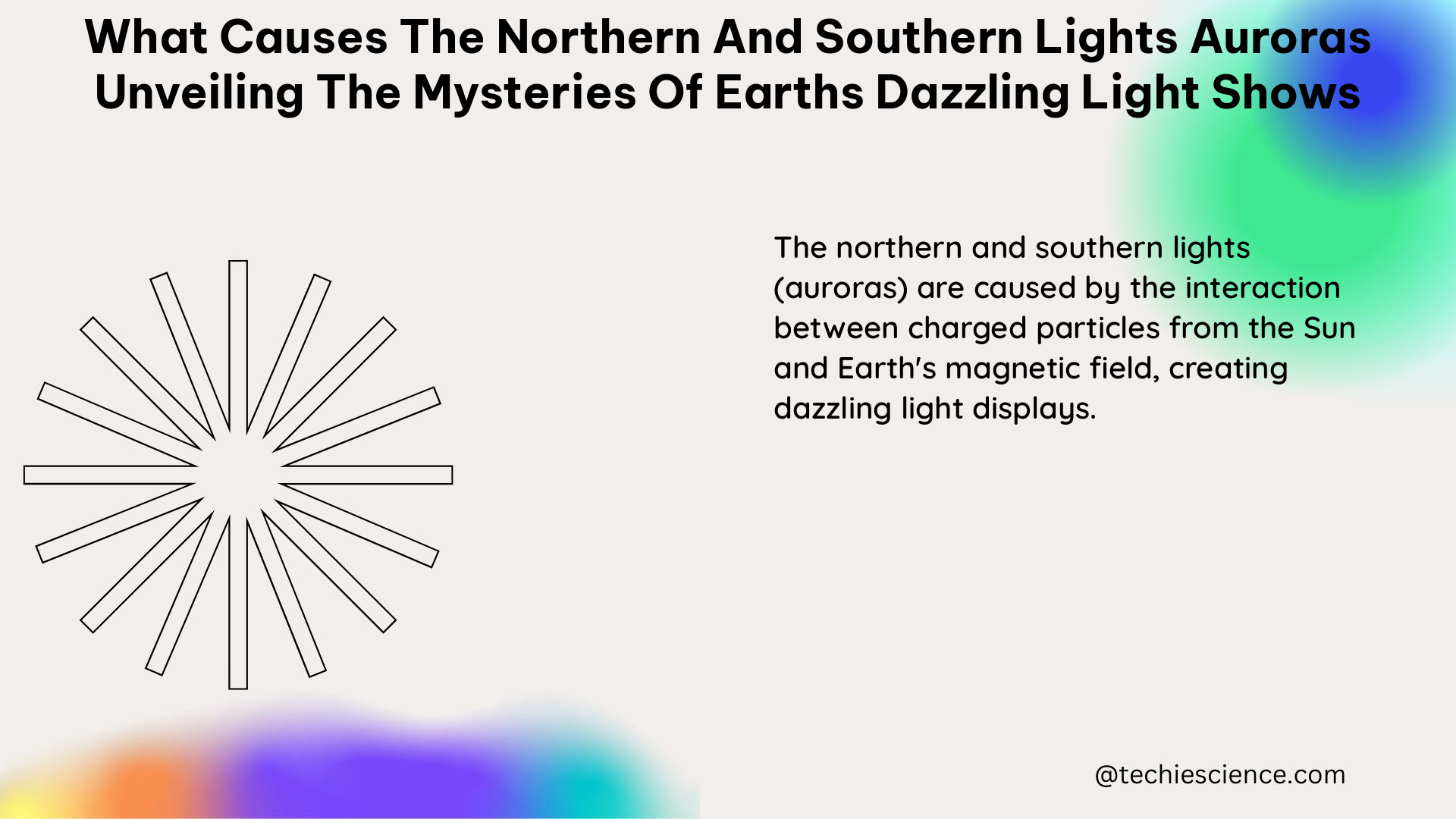The northern and southern lights, also known as the aurora borealis and aurora australis, are captivating natural light displays that occur in the Earth’s sky, primarily in high-latitude regions. These dazzling light shows are the result of a complex interplay between the solar wind and the Earth’s magnetic field, which accelerates charged particles into the upper atmosphere, leading to the excitation of gas molecules and the emission of vibrant colors.
The Solar Wind and the Earth’s Magnetosphere
The solar wind is a stream of charged particles, primarily electrons and protons, that are continuously released from the Sun’s upper atmosphere. These particles travel across space at varying speeds, eventually encountering the Earth’s magnetic field, known as the magnetosphere.
The Earth’s magnetosphere acts as a protective shield, deflecting the majority of the solar wind particles. However, some of these charged particles are funneled down towards the north and south magnetic poles, forming regions known as the Auroral Ovals.
The Magnetosphere and the Auroral Ovals
The Earth’s magnetosphere is a complex and dynamic system that is shaped by the interaction between the solar wind and the planet’s magnetic field. The magnetosphere extends thousands of kilometers into space, creating a protective bubble around the Earth.
The Auroral Ovals are regions located around the north and south magnetic poles, where the charged particles from the solar wind are concentrated. These ovals are the primary locations where the northern and southern lights are observed.
The Excitation of Atmospheric Gases

As the charged particles from the solar wind enter the Earth’s upper atmosphere within the Auroral Ovals, they collide with atoms and molecules of oxygen and nitrogen. These collisions excite the gas molecules, causing them to emit light in the form of the aurora.
The Physics of Auroral Emissions
The different colors of the aurora are determined by the type of gas molecule involved in the collision and the altitude of the collision. Oxygen molecules, when excited, produce green and red light, while nitrogen molecules produce blue and purple light.
The energy of the charged particles from the solar wind determines the altitude at which the collisions occur. Higher-energy particles can penetrate deeper into the atmosphere, leading to collisions at lower altitudes, which produce the red and purple hues of the aurora. Lower-energy particles, on the other hand, collide at higher altitudes, resulting in the green and blue colors.
The intensity of the aurora is influenced by the strength of the solar wind and the Earth’s magnetic field. The Kp index, a measure of geomagnetic activity, quantifies the disturbances in the Earth’s magnetic field caused by the solar wind. Higher Kp values indicate stronger geomagnetic activity and a greater likelihood of auroral activity.
The OVATION Model
The OVATION model, developed at the Johns Hopkins University, Applied Physics Laboratory, uses the solar wind velocity and interplanetary magnetic field as input to estimate the aurora viewing probability. This model helps predict the location and intensity of the aurora, allowing for better planning and observation of these captivating light shows.
Observing the Aurora
The northern and southern lights can be observed from just after sunset or just before sunrise and are not visible during daylight hours. The aurora does not need to be directly overhead to be visible, and it can be observed from as much as 1,000 km away when the aurora is bright and conditions are favorable.
Factors Affecting Auroral Visibility
The visibility of the aurora is influenced by several factors, including the strength of the solar wind, the Earth’s magnetic field, and the weather conditions. Clear skies and low light pollution are essential for optimal viewing, as the aurora can be outshined by artificial lighting.
Conclusion
The northern and southern lights are the result of a complex interplay between the solar wind and the Earth’s magnetic field. The charged particles from the solar wind are funneled into the Auroral Ovals, where they collide with atmospheric gases, exciting them and producing the vibrant colors of the aurora. The intensity and location of the aurora are influenced by various factors, including the strength of the solar wind and the Earth’s magnetic field, as well as the OVATION model’s predictions.
Understanding the physics behind these dazzling light shows not only satisfies our curiosity but also helps us better predict and observe these natural wonders, allowing us to appreciate the intricate workings of our planet’s magnetosphere and its interaction with the solar system.
References:
- NOAA Space Weather Prediction Center – Aurora 30-Minute Forecast
- UCAR Center for Science Education – The Science of Auroras
- Space.com – Northern Lights: Facts About the Aurora Borealis
- Hurtigruten – The Science Behind the Northern Lights

The lambdageeks.com Core SME Team is a group of experienced subject matter experts from diverse scientific and technical fields including Physics, Chemistry, Technology,Electronics & Electrical Engineering, Automotive, Mechanical Engineering. Our team collaborates to create high-quality, well-researched articles on a wide range of science and technology topics for the lambdageeks.com website.
All Our Senior SME are having more than 7 Years of experience in the respective fields . They are either Working Industry Professionals or assocaited With different Universities. Refer Our Authors Page to get to know About our Core SMEs.